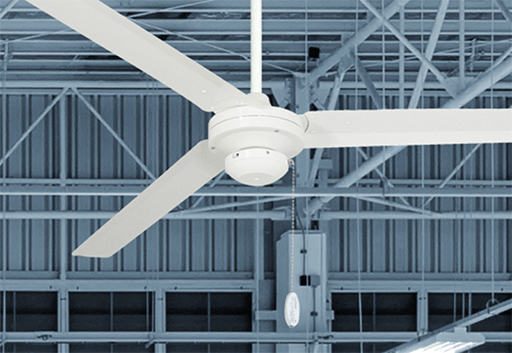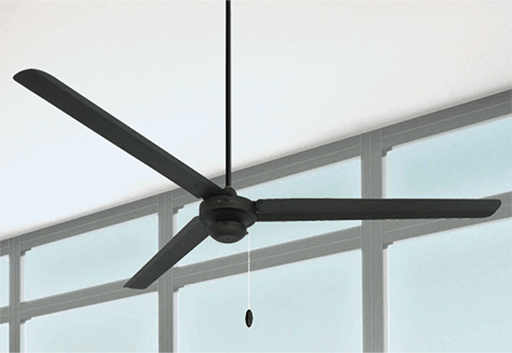
Figure 1: Tornado 72 in Pure White Industrial Ceiling Fan.
Industrial fans, which can efficiently push a large amount of air and generate super-large air volume. This creates a circulating airflow field in the space. It can effectively regulate the air circulation in the industrial production workshop. The High Volume–Low Speed (HVLS) industrial energy-saving fan is a huge ceiling fan with a diameter of 7.3 meters. Compared with other industrial fans, it is more efficient and generates large air volume with only 50RPM.
Thanks to the principle of aerodynamics and advanced technology, the streamlined blades of industrial fans can drive a large amount of air with only 1.5KW or less power, generating a natural breeze system with a large area, which performs the dual functions of ventilation and cooling. Compared with traditional heating, ventilation, and air conditioning (HVAC) and small high-speed fans, the industrial fan has unparalleled application advantages and is a perfect solution for ventilation and cooling in large spaces.
Industrial fans have the advantages of wide speed range, great controllability and reliability, light weight, environmental protection and energy saving, environmental tolerance and economy. In the field that requires high performance, they gradually replace other types of motors and occupy a dominant position.

Figure 2: Tornado 72 in Oil Rubbed Bronze Industrial Ceiling Fan.
The Constitution and Working Principle of Industrial Fans
The constitution of DC industrial axial fans:
Rotor: fan blade, shaft, magnetic strip, motor housing
Stator: silicon steel sheet, wire frame, PIN needle, enameled wire, PCB assembly, lead wire
Outer frame: housing, bearing
In finished product assembly: additional materials such as sliding wire, retaining ring, lubricating oil, etc.
The working principle: the DC industrial fan use the principle of electromagnetic induction and uses Hall induction components as synchronous detection devices. It controls a set of circuits, switches the order in which the windings are energized, and generates a rotating magnetic field. This realizes the mechatronics of electronic commutation.
Functions of Industrial Fans
Personnel cooling: the natural breeze generated by large energy-saving fans can promote the evaporation of sweat, take away heat, and cool the human body, bringing a cooling feeling. Usually, this cooling feeling can reach 5-8°C.

Figure 3: Peregrine industrial LED ceiling fan of Rejuvenation.
Natural ventilation: industrial production environments tend to have a lot of smoke, humidity, carbon dioxide, poor air quality, and people and equipment are concentrated at the bottom of the building. This makes ventilation more difficult. Compared with negative pressure fans, industrial fans can fully realize natural ventilation due to their large ventilation volume.
Dehumidification: oversized energy efficient fans directly and effectively promote air mixing throughout the space. Therefore, it can avoid noises and moisture-induced decay that other ventilation schemes are prone to produce.
Related Info
Guides to Choose a Thermostatic Expansion ValveComparisons between the Electronic Expansion Valve and the Capillary Tube
3 Common Expansion Valve Failures and the Solutions
What is a Thermostatic Expansion Valve?
What is an Electronic Expansion Valve?


